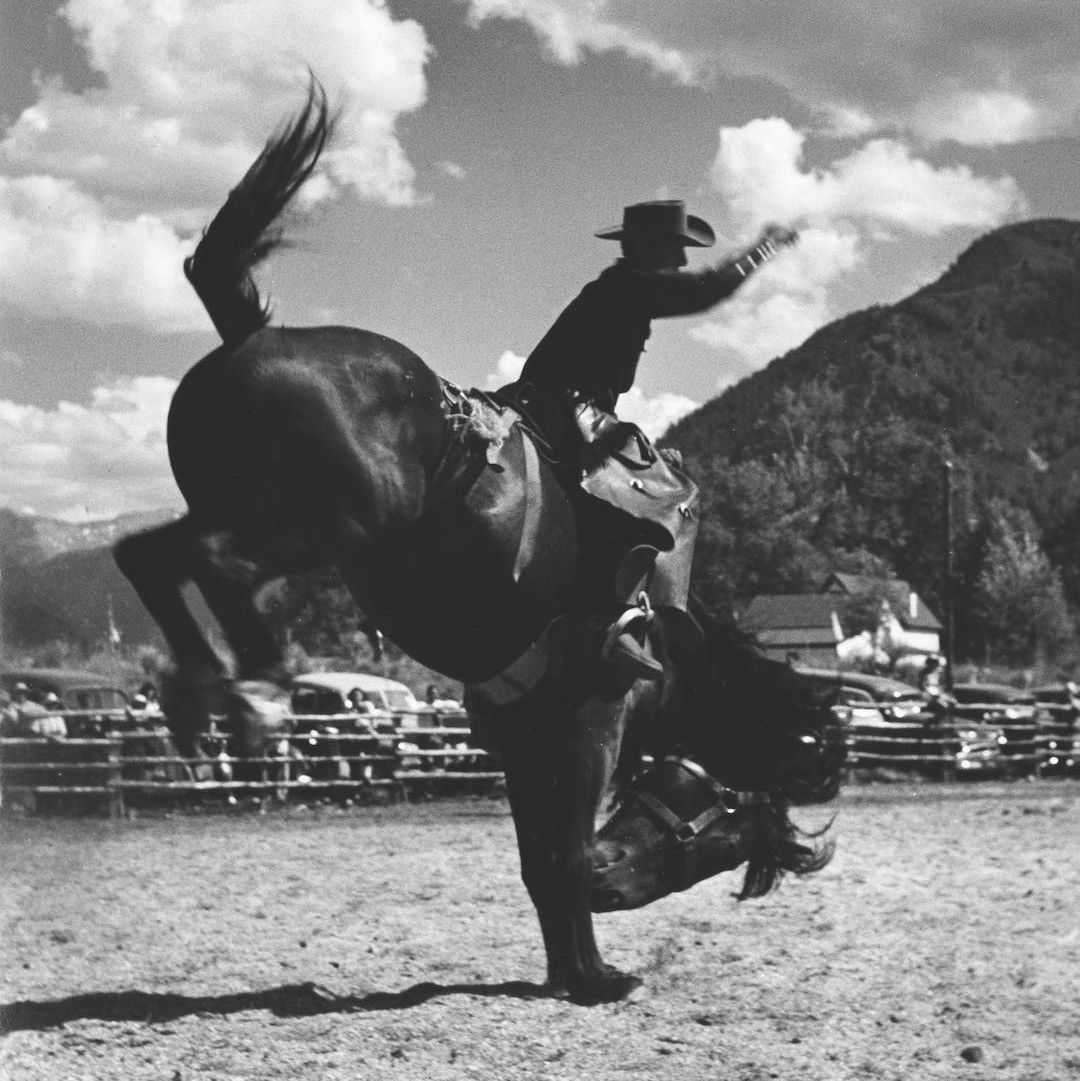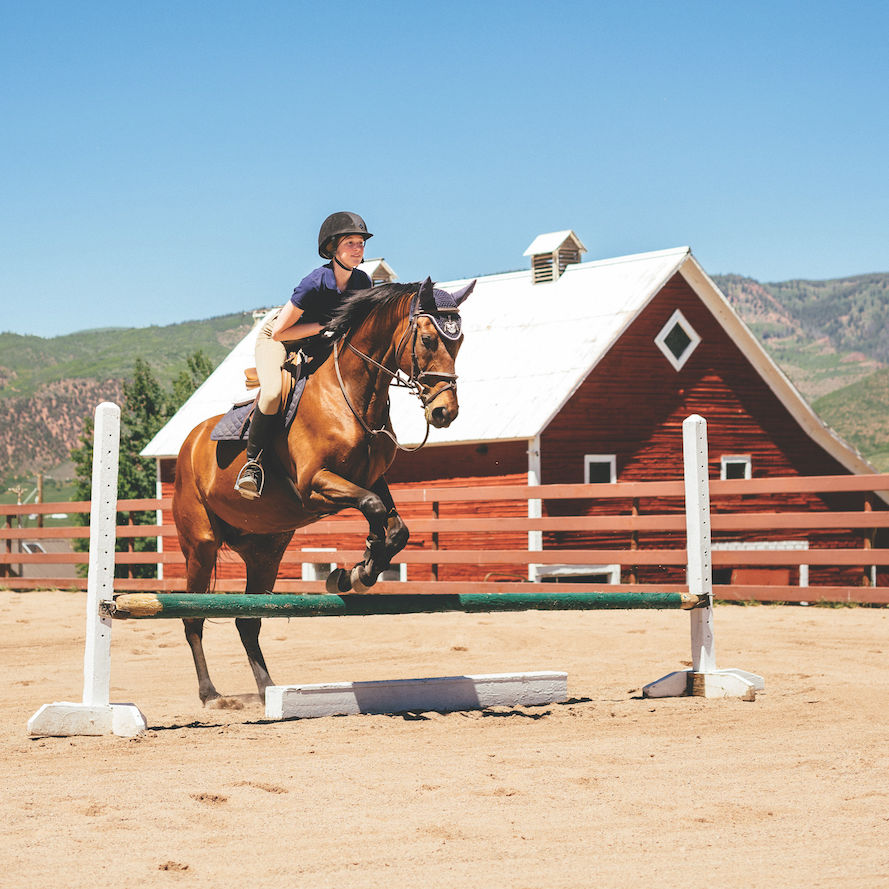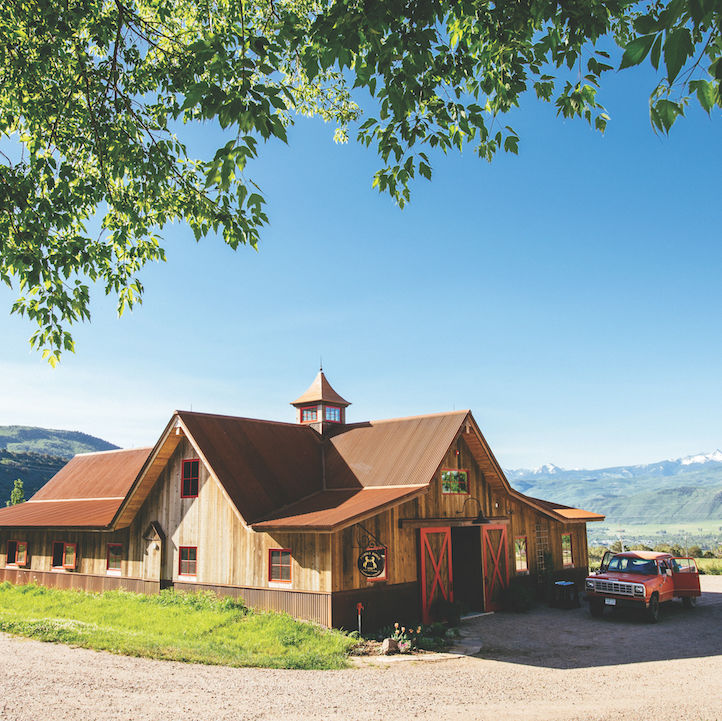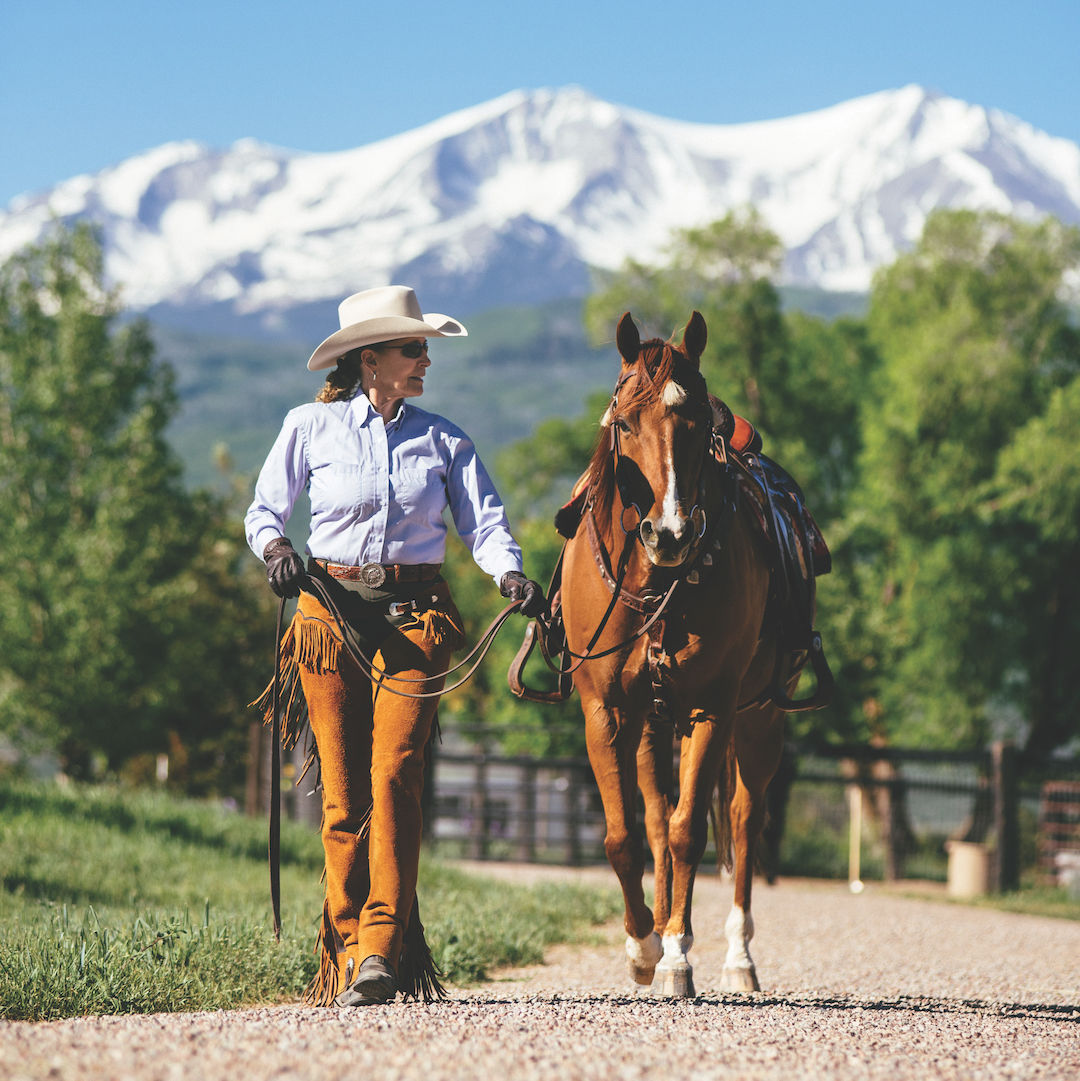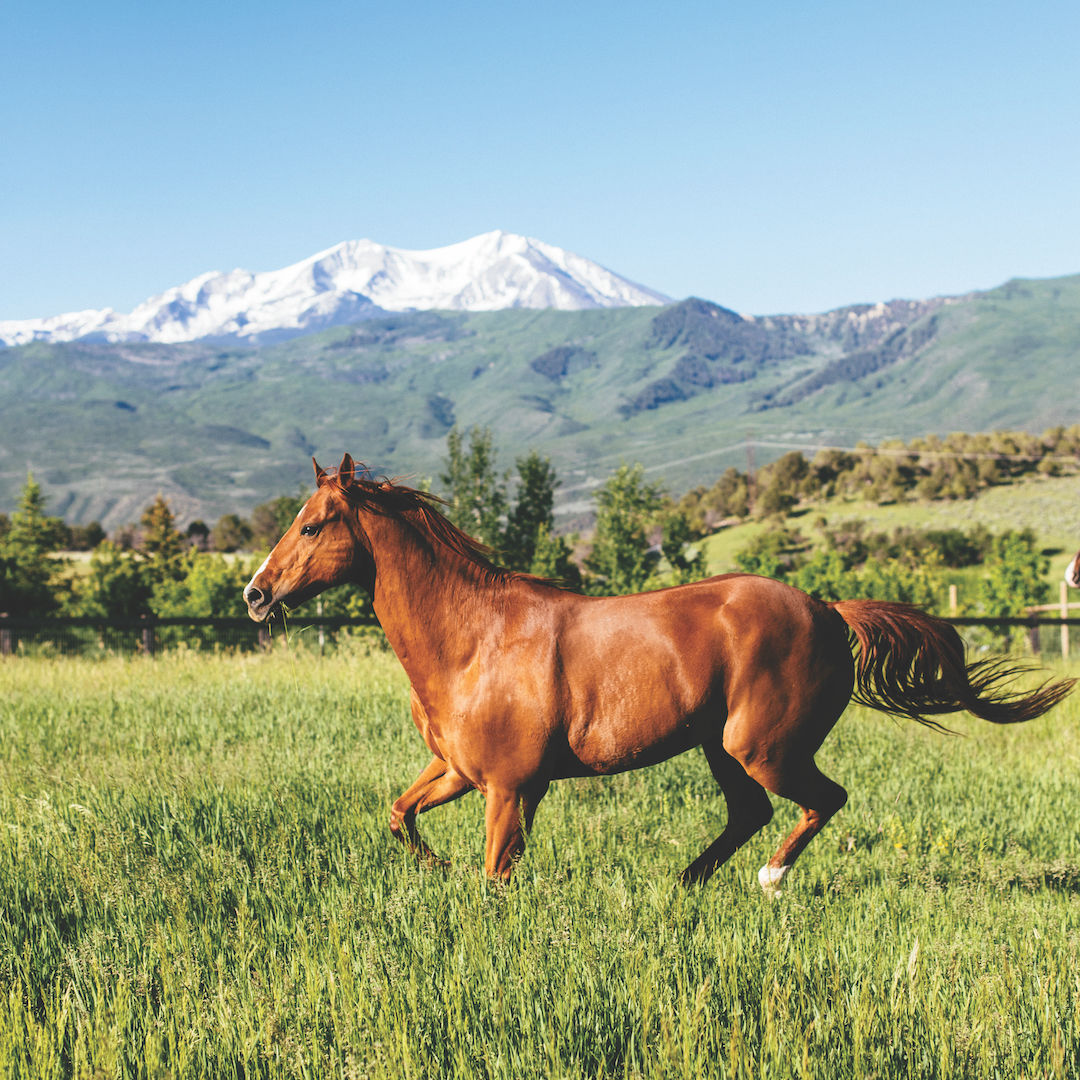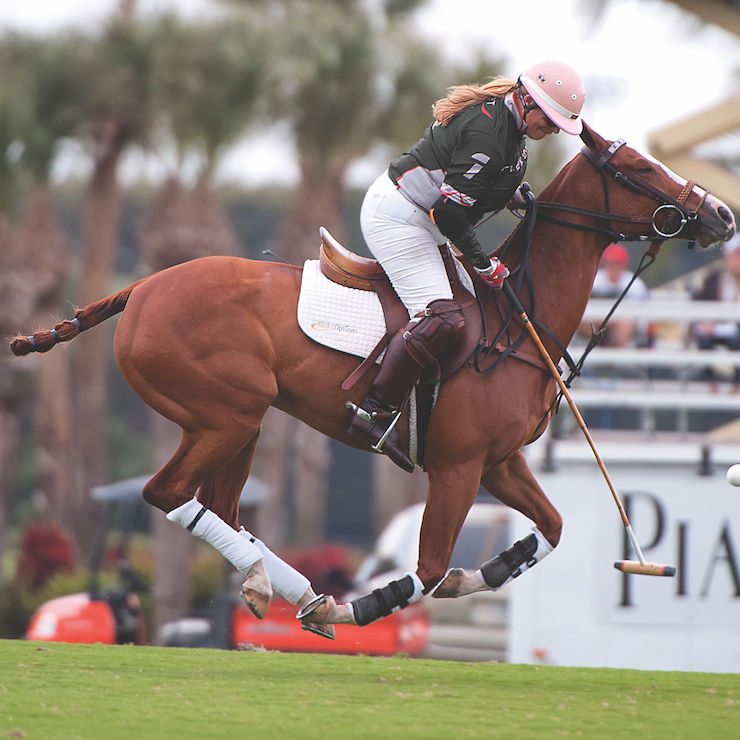Ride 'Em Cowpokes: Where to Watch the Rodeo This Summer
With its big belt buckles, bigger hats, and brave cowboys and girls, rodeo has long been synonymous with the Wild West. Born out of ranching as a way for riders to show off their skills, it’s been a summertime staple since the late 1800s. Though the West may not be as wild as it once was, good horse-handling skills still stand for something, and local rodeos have a seemingly timeless appeal for both spectators in new jeans and crisp hats and riders who earn their buckles the hard way.

A cowboy competes in the Aspen Rodeo (1950).
It’s no surprise, given the history of horses in Aspen, that the town had its first rodeo long before its first ski lift. As the sport's popularity rose locally, it also became more organized. The Aspen Saddle and Bridle Club was formed in 1953, just six weeks before the first Silver Stampede rodeo, as a place for riders “to learn to rope calves, ride their horses, and enjoy a club atmosphere that would not interfere with the other activities in Aspen,” according to a brochure at the time.
The “other activities” referred to likely included the Aspen Music Festival. The rodeo had been held near the Benedict Music Tent, but when talk of cancelling it arose, the club was formed and leased land west of town for a new arena.
The Snowmass Rodeo, held since 1977, ushered in a new era with weekly contests. Up until then, there had been only annual events like the Silver Stampede, Potato Day Rodeo, W-J Rodeo—at the W-J Ranch on McLain Flats—along with heritage demos in smaller rodeo rings.
Today, spectators have two weekly options: the tourist-oriented Snowmass Rodeo on Wednesday evenings, which includes a pre-event barbecue and other organized ancillary activities, and the low-key, back-up-your-truck-to-the-fence-and-bring-a-cooler vibe of the Carbondale Wild West Rodeo on Thursdays. Both offer their own mix of Western–style, old-fashioned fun.
